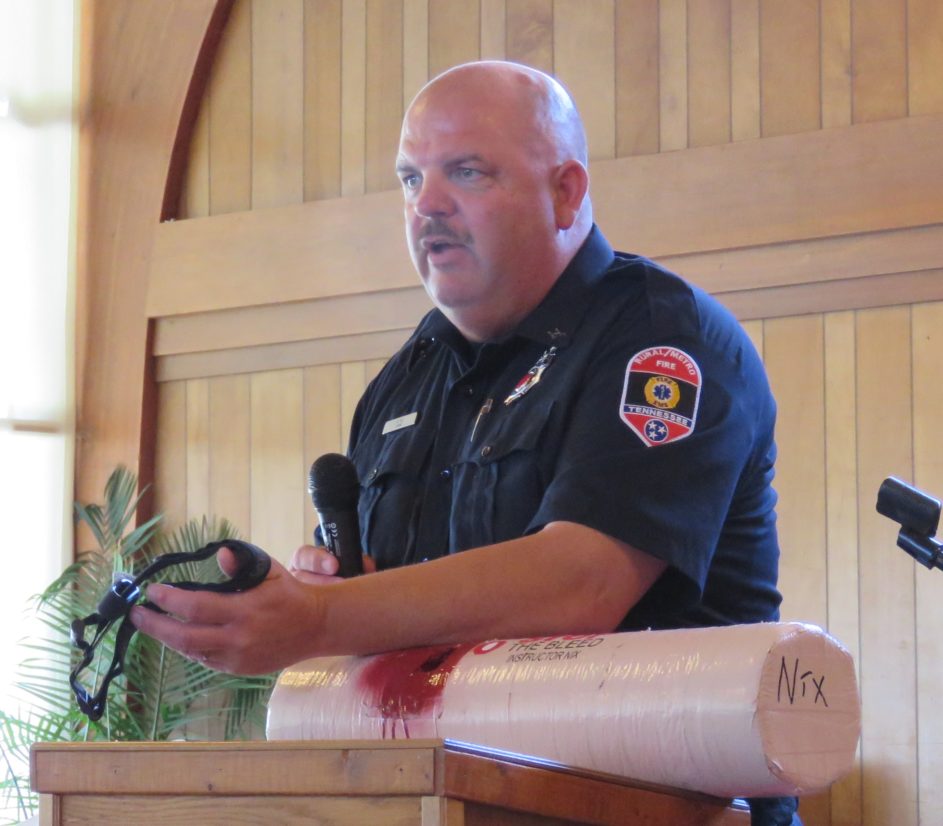Knowing how to save a life could, well, save a life. That was the message from Rural Metro Fire Captain Robby Nix at a recent meeting of the Halls Business and Professional Association.
Nix demonstrated compression and tourniquet techniques to “stop the bleed” and also discussed non-invasive CPR.
First, phone 911 or get someone to. Then stop the bleed.
“Make direct pressure direct,” he said. Find where the bleeding is coming from and apply firm, steady pressure to the bleeding site with bandages or clothing. Be aware that varicose veins can bleed like an arterial flow.

Marilyn Johnson shares a laugh with son Ben (partially shown at right) as Sam Roach instructs on tourniquet techniques.
Tourniquet: If the bleeding doesn’t stop, place a tourniquet as high as possible on an extremity (arm or leg) and then tighten it until the bleeding stops. Pull the strap through the buckle, twist the rod tightly, clip and secure the rod with the clasp or the Velco strap. If the bleeding doesn’t stop, place a second tourniquet closer to the torso from the first one.
Nix said the mistake most frequently made is not tightening the tourniquet enough. Don’t worry about hurting the person. You’re trying to stop the bleed. Don’t loosen the tourniquet after applying, even if the person requests it.
Wound packing: For a torso bleed, put something (clothing, for instance) into the hole and compress with both hands for 10 minutes. If it bleeds through, don’t remove the bandage. Put another on top and continue compressing.
Be sure to keep the victim warm until emergency service-providers arrive.
Nix recommended a combat application tourniquet (CAT) for about $30 from Amazon. “You can buy cheaper, but don’t get a substitute.”

Brian Pratt instructs Mike Conley of Pioneer Heating & Air on proper techniques for compression. In center of picture are Jeff Bayless of Sofas & More and Dakota Karnes.
Cardio resuscitation: A hands-only emergency procedure that attempts to keep the heart beating, circulating blood in a person who is in cardiac arrest.
Nix said if you see a teen or adult suddenly collapse, call 911 and then push hard and fast in the center of their chest to the beat of the disco song “Stayin’ Alive.” Keep the pressure steady at a rate of 100 to 120 compressions per minute.
Rural Metro Fire has emergency medical technicians as first responders on its fire trucks (as does the Knoxville Fire Department inside the city), and all but three of the fire companies are ALS (advanced life support) with paramedics as well as EMTs. But quick action by citizens close by can stabilize an injured person, perhaps saving a life.

